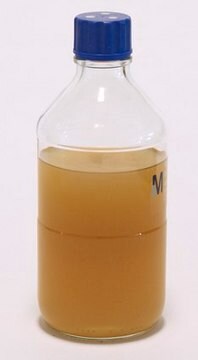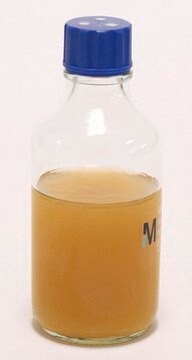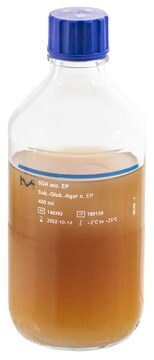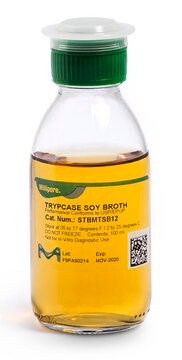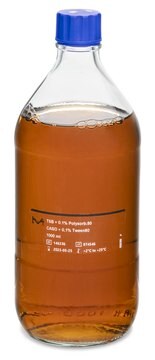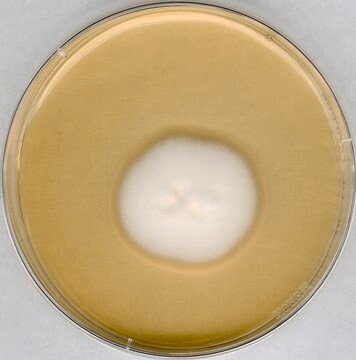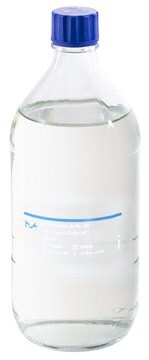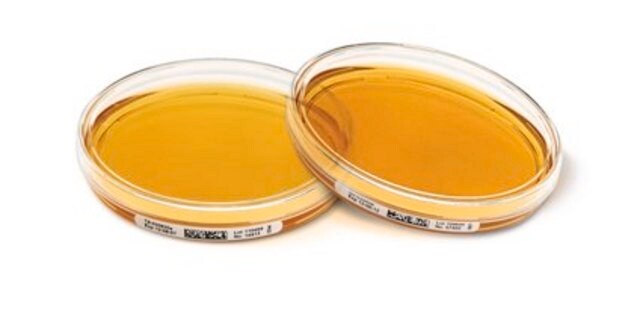1.46457
Tryptic Soy Agar - Ready-to-use Bottles & Tubes
bottle capacity 250 mL, bottle filling volume 200 mL, closure type, blue screw cap with 3 loci, box of 6 bottles
Sinónimos:
CASO Agar, Casein Soybean Digest Agar, Tryptone Soya Agar, TSA, Tryptic Soy Agar EP+USP
About This Item
Productos recomendados
agency
EP
USP
Quality Level
description
For cultivation & isolation of fastidious bacteria, yeasts, and fungi
sterility
sterile
form
liquid
shelf life
12 mo.
feature
closure type blue screw cap with 3 loci
ready-to-use
packaging
box of 6 bottles
single packed of (200 ml in 250 ml bottle with blue screw cap and 3 loci (6 bottles per box))
technique(s)
direct inoculation: suitable
sterile filtration: suitable
bottle capacity
250 mL
bottle filling volume
200 mL
pH
7.3
application(s)
cosmetics
food and beverages
microbiology
pharmaceutical
sterility testing
storage temp.
2-25°C
¿Está buscando productos similares? Visita Guía de comparación de productos
Categorías relacionadas
General description
Application
Features and Benefits
- Ready-to-use media
- Bottles with screw caps
- Suitable for pour plate method
Storage Class
11 - Combustible Solids
wgk_germany
WGK 2
Certificados de análisis (COA)
Busque Certificados de análisis (COA) introduciendo el número de lote del producto. Los números de lote se encuentran en la etiqueta del producto después de las palabras «Lot» o «Batch»
¿Ya tiene este producto?
Encuentre la documentación para los productos que ha comprado recientemente en la Biblioteca de documentos.
Nuestro equipo de científicos tiene experiencia en todas las áreas de investigación: Ciencias de la vida, Ciencia de los materiales, Síntesis química, Cromatografía, Analítica y muchas otras.
Póngase en contacto con el Servicio técnico